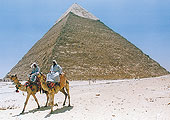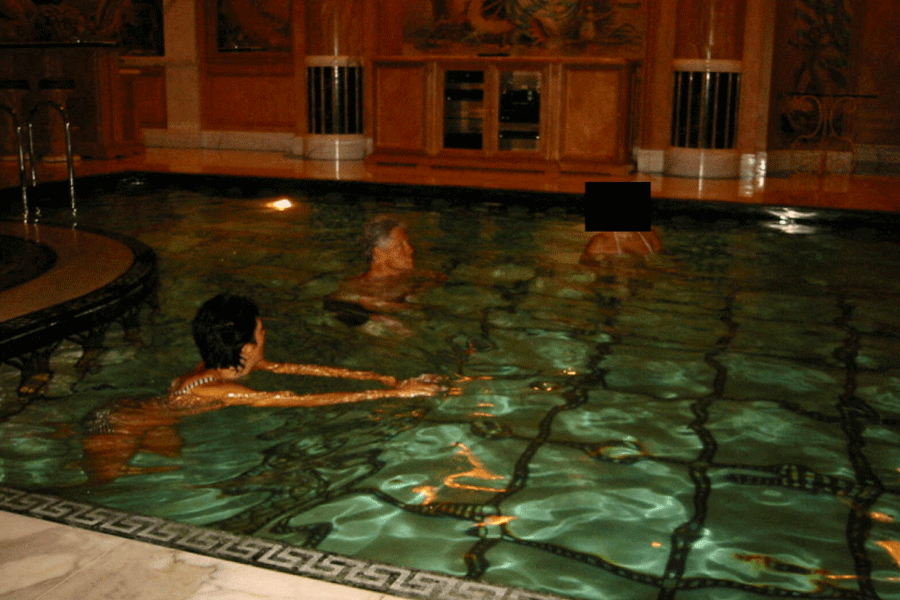 |
Herodotus summed it up back in the 5th century BC. ?Nowhere,? he wrote, ?are there so many marvellous things...nor in the world besides are to be seen so many things of unspeakable greatness?. Not much has changed since then. There are probably more ancient monuments and wondrous manmade sights to be seen in Egypt than anywhere else in the world. Take in the Sphinx and the Pyramids in Cairo, the temples of Luxor or Abu Simbel in Aswan. And there are hundreds of other monuments, each of which is worth the visit.
Also bear in mind that there?s modern Egypt which is an amalgam of past legacies and more. Mud-brick villages stand beside millennia-old ruins surrounded by buildings of steel and glass. Some townsfolk dress in long flowing robes, others in Levis and Reeboks, and city traffic competes with donkey-drawn carts and wandering goats. Apart from pyramids and monuments, Egypt is also about Red Sea scuba diving, hot nightspots, luxury hotels, five-star restaurants, romantic cruises down the Nile and grand operas.
When to go
Deciding when to visit Egypt depends a lot on where you want to go. Everywhere south of Cairo is uncomfortably hot in the summer (June-August), especially Luxor and Aswan. The winter months (December-February) are definitely the best time to visit these areas. The Mediterranean coast is at its most crowded during summer, but winter in Cairo can get pretty cool. Hence, March to May or September to November is the best time to enjoy the warm days without the crush of bodies on the beaches and the midday heat of high summer.
 |
Where to go
There is probably more to see in Egypt that there is in almost all of Europe. However, it is better to start the journey from Cairo, the capital city, and begin the Egyptian quest with the pyramids.
Cairo
Cairo isn?t a gentle city. Chaotic, noisy, polluted, totally unpredictable and seething with people, the sheer intensity of the city will either seduce or appall. But it is definitely worth a visit.
Cairo awes you with its vital blend of the majestic past and the glorious present. Atop the Moqattam hills on the Eastern bank of the Nile rises the towering and impressive citadel of Salah El-Din El-Ayoubi. On the Nile?s Western bank, there are the three pyramids and the Sphinx, the greatest tribute to pharonic art and thought.
While in Cairo, it is mandatory to take the Giza tour that takes you to Memphis, the ancient capital of Egypt where you can see the colossal statue of Rameses II and the great Alabaster Sphinx. Of all Egypt?s monuments, none is as majestic and haunting as the Great Sphinx. Then there are the pyramids of Sakkara (the first proper pyramids built for the king Zoser).
And don?t miss the pyramids of Unas and Oser-Kaf. However, Cairo?s major attractions also include the Egyptian Museum and the Citadel. The Egyptian Museum boasts a magnificent collection of antiques including mummies, sarcophagi and fabulous treasures of Tut Ankh Amun?s tomb. The Citadel complex comprises a number of important monuments such as the Mosque of Suleiman Pasha, the Alabaster Mosque, Joeh?s Walls, Mohamed Ali Pasha Palace and gives a panoramic view of Cairo from the Moqattam hills.
And before you leave Cairo, make a trip to the old city, which showcases some of the relics of early Christianity. The Church of Abu-Sergah and St. Barbara, the Hanging Church, the Coptic Museum housing antiquities dating from 300-1,000 B.C, and the Ben Ezra Synagogue are must-visits. After the monument-gazing, take a relaxing ride down the Nile on a felucca, a traditional Egyptian sailing boat, and see a different side of Cairo.
It?s also a good idea to take a day trip from Cairo to Alexandria, where Alexander the Great set his new capital in 331 BC. Once famed for its world-famous library, Alexandria at its peak was a great repository of science, philosophy and intellectual thought and learning. The Graeco-Roman Museum has relics that date back to the 3rd century BC. Experts are hoping to discover Cleopatra?s Palace under the sea bed off Alexandria; platforms, pavements and columns have been found, and in 1998, a granite statue of a priest of Isis and a diorite sphinx were raised from the sea.
 |
Luxor
Once you are done with Cairo, take the train, a flight or drive down to Luxor, 670 km south of Cairo. This ancient city is a part of the old ?Thebes the Hundred crated? which welcomed visitors from all the countries of the ancient world. Having conquered Egypt, the Arabs, bemused by its tall buildings and impressive temples, called it ?El Qusur? meaning ?The Castles?.
Here, it is best to begin with a tour to West Bank, where you can see the Valley of Kings and the Temple of Queen Hatshepsut. After an excursion to the Necropolis of Thebes, drive to the Valley of Kings to visit the tombs of various dynasties such as the Deir El Bahari and the Colossi of Memnon, which are two gigantic sitting statues representing Amenophis III.
After the West bank, head to the East bank for an excursion to the Luxor Temple to see its courtyard and the granite statues of Rameses the Great. However, the highlight of Luxor is the Karnak Temples ? a series of temples built in different reigns.
Starting with the Avenue of Sphinxes, there is a monumental journey in the form of the Unfinished Propylon, the Hypostyle Hall with its 134 gigantic columns, the Obelisks of Queen Hatshepsut and Tuthmosis III, the temple of Amon adorned with lotus and papyrus designs, the Granite Scarbeus of Amenophis III and the Sacred Lake.
A short distance away from Karnak is the Temple of Esna, built during the reign of Thutmose III and dedicated to the ram-god Khnum whom the ancient Egyptian believed fashioned man from the mud of the Nile on his potter?s wheel.
Aswan
Aswan is most enchanting in the winter, and is also the least expensive city in Egypt. Situated on the eastern bank of the Nile, 900 km south of Cairo, Aswan links Egypt with Sudan ? the gateway to the African continent ? and is an important commercial centre. Here you can drive down to see the Temple of Philae Island with its unfinished Obelisks, the Granite Quarries and also take a boat ride across the Old Aswan Dam or to the Elephantine Island where you can see the Agha Khan III Mausoleum.
Aswan is home to the colossal Temple of Abu Simbel built by Rameses II (XIXth Dynasty), which was moved stone by stone to a new site when the Aswan dam was being built. The temples were built out of a sandstone rock cliff.
The Kalabsha Temple and the Temple of Kom Ombo are also interesting sites. The Kalabsha Temple, originally built by Tuthmosis II and Amenophis II at Kalabsha, 40 miles south of Aswan, was restored during the Roman conquest. The Temple of Kom Ombo which stands on high ground overlooking the Nile differs from other temples by its double entrance, each of which is dedicated to divinity: Haroeris with his falcon head and Sobec with his crocodile head.
Hurghada
If you are by now tired of the monument tours, it is time to go fishing in Hurghada, a small isolated fishing village which has become a popular tourist resort thanks to its exceptionally blue water, intricate coral reef and wide sandy beaches. About 395 km to the south of Suez and approximately 250 km from Luxor, enclosed between the sea and the desert, Hurghada enjoys wonderful climate all year around. Here you can admire the typical architecture of the houses and enjoy a visit to its important Marine Museum. But the most surprising attraction is the Red Sea itself whose sea floor is populated by unique fauna and flora.
The Island of Giftun and Sharm El Naga offer some of the best coral reefs and snorkelling in the world. And after a tiring day of snorkelling and scuba diving, you can take a ride in the Aqua Scope, which is a glass boat that allows you to look at the sea below as you travel.
 |
Off the beaten track
Once you have been to all the must-sees in Egypt, and have an appetite for the unusual, head to the villages that are not crowded and still hold the charm of ancient Egypt.
Dahab
Once a sleepy backwater, the town has become something of a lazy layover. There?s dirt-cheap accommodation available virtually on the beach as well as inexpensive restaurants and hotels, and the swimming and snorkelling in the Gulf of Aqaba are magnificent. Dahab is 85 km north of Sharmel-Sheikh on the Gulf of Aqaba, near the southern tip of Sinai. Buses connect Dahab with Sharm el-Sheikh, Cairo and Suez each day.
Dakhla Oasis
This oasis is centred around the town of Mut, a labyrinth of old laneways and mud-brick houses clinging to the hill slopes. The views from this hill over the medieval town and the empty backdrop of cliffs, dunes and desert are quite fantastic. Nearby, Al-Qasr is an ancient little town with much of its traditional architecture still intact. The medieval atmosphere is accentuated by the narrow covered streets (built to provide shelter from the summer sun and desert windstorms) and the animals that roam through them.
Marsa Alam
This is a fishing village on Egypt?s Red Sea Coast. It sits on the T-junction between the Red Sea Coast road and the road to Edfu, 230 km away on the banks of the Nile. Swimming and snorkelling in the area are magnificent, but be very careful ? much of the region is mined.
About 145 km south-west into the desert is the Tomb of Sayyed al-Shazli, who was an important Sufi leader in the 13th century. His tomb was restored early in the last century, but you may not make it through the checkpoints.
Sidi Abdel Rahman
Sidi Abdel Rahman is a lovely waterfront town on the Mediterranean coast that?s free of the hordes of tourists who flock to similar places. Fine white-sand beaches abound along this stretch of coast and it?s easy to find your own deserted bit of paradise. The town is a centre for local nomads who sometimes congregate at a small village nearby. The government is actively trying to settle these tribespeople and many have traded their mobile lifestyle ? living in tents and herding livestock ? for government-built houses of concrete.
The must-dos
 |
• Take the romantic cruise along the Nile and watch the belly dancers.
• Visit the Khan El-Khalili bazaars in Cairo to buy the best of spices, perfumes, gold, silver, carpets, brass, copperware, ceramics and mashrabia.
• Visit the Pharaoh village near Cairo and take a step back in time, about 3,000 years ago, to be exact. A time brought to life by an incredible group of actors and actresses, faithful and exact reproductions of buildings, clothing, and lifestyles.
• Take a horse/camel journey into the desert to watch the sunrise and experience the first ray of light reveal the ancient Sphinx and pyramids. It?s breath-taking.
• Drive from Aswan to Darau and visit the camel market. May be you can bring one home to give your dog a complex. Camels are known to bite.











